blog.x-e.ro / demo: page 1 of 18
ascii :: patron saint of demosplash
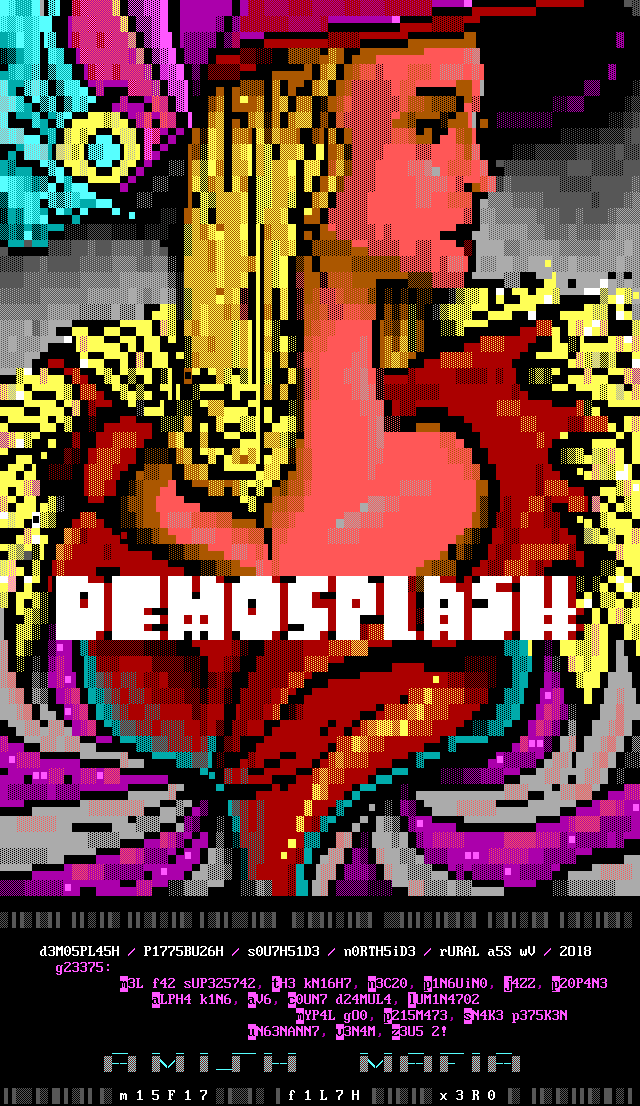
2018 demosplash in pittsburgh was amazing once again. we met new text art friends, even some from across the pond! we decided to collab draw live during the show this year. the AMi5H were in full effect, we invited the folks from fuel (rip) to draw with us, but they refused. something about pressure ;P anyhow, the Ansi Masters In Straw Hats (misfit, filth, and myself) drew this piece. for a while it was a heart, then misfit drew the face, josh drew the fancy hat...
demos :: the widest ascii/ansi colly
the newest impure artpack #67 has the incarnation of a conversion we had on irc. historically amiga collys are all vertical and lack color. since impure is already viewed as a "modern" crew for releasing in color and files wider than 80 columns... we decided why not make a modern colly?! and what's the perfect subject for a really really wide ansi? a train covered in graffiti of course!
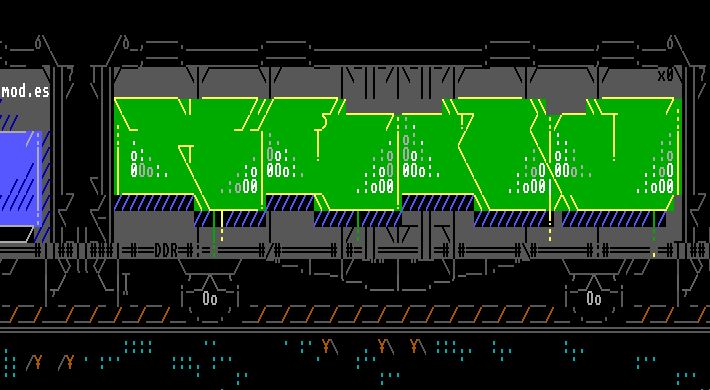
life :: pittsburgh's demoparty

last year we had such a good time at demosplash that misfit, filth, and myself decided to do it again!
life :: pittsburgh's demoscene event
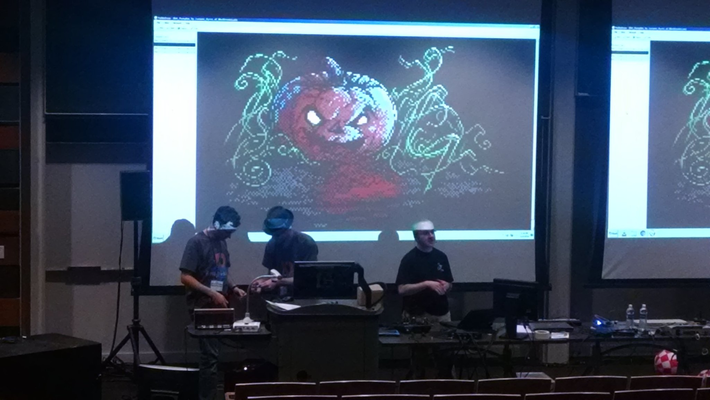
since joining the textmode art scene, i've made lots of new friends. blocktronics and impure have both been more art collectives than a release groups. seeing the art other members are working on is very inspiring and, for the most part, the criticism is constructive. over time i've become friends with misfit and filth, all members of blocktronics who live in pretty close proximity to each other. this year we decided to meet up at pittsburgh's local demoscene event demosplash, and had a blast!
demos :: NES game password generator
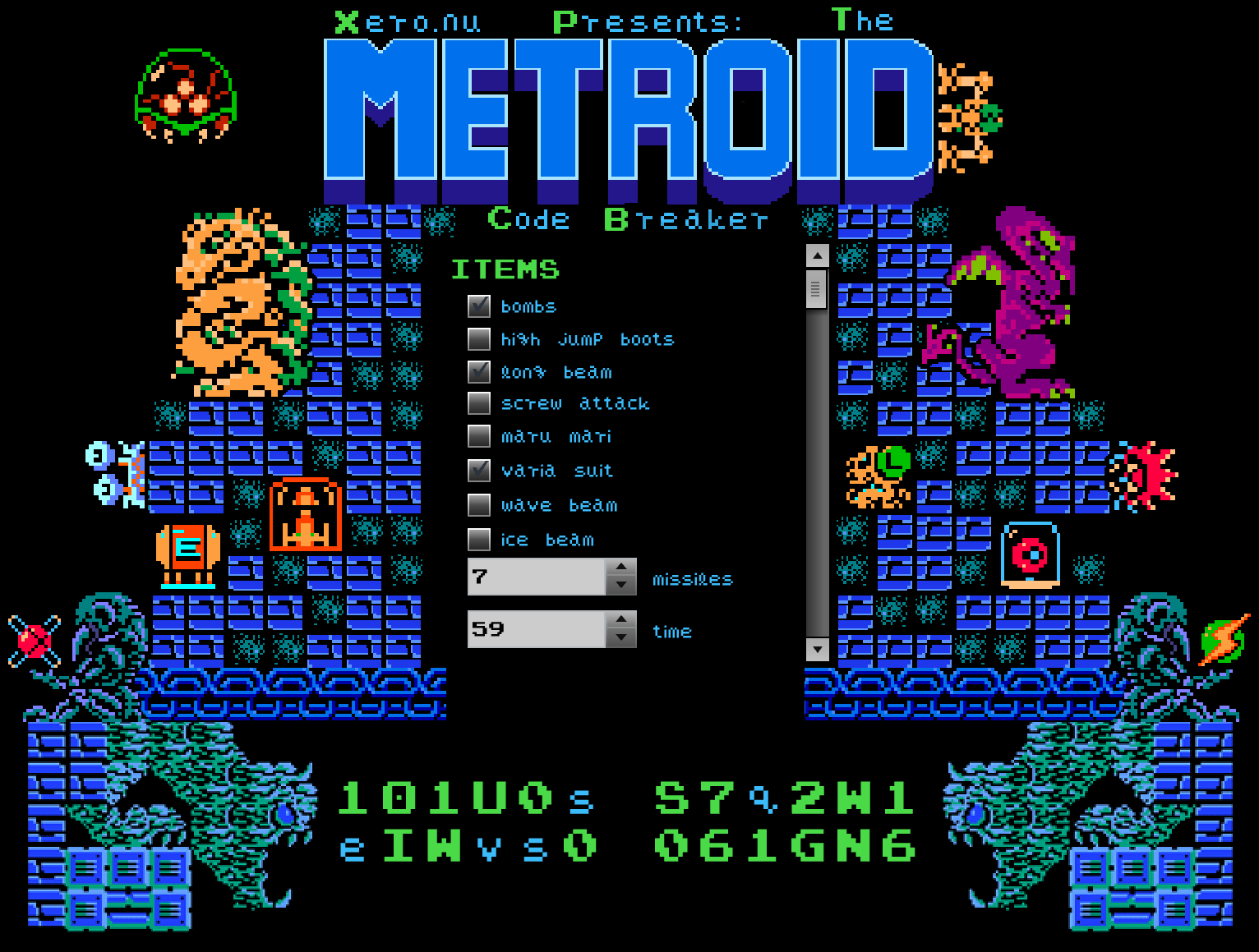
many years ago, a rom hacker by the name of SnowBro set out to gain an intuitive understanding of the inner workings of the software we lovingly refer to as metroid. using only the rom file, he was able to convert it into assembly code and learn exactly how the game engine worked.
armed with these files and the knowledge they contained, i set out to build a metroid password generator tool. being a scene kid, i have some experience with keygens already....
demos :: papervision3D math art
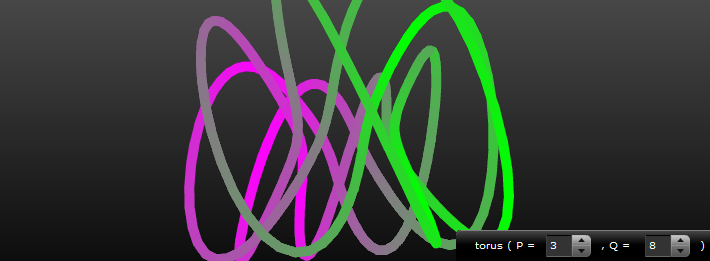
here we go again, another papervision3D demo featuring math permeated lines. this time im working with a classic piece of code known as the PQ torus. the vague idea is that you have 2 numbers (P + Q) that are used in the algorithm to define the knot. in general, given P + Q mutually prime, the line wraps meridionally around the torus P times and wraps the longitudinally around it Q times. i was having some trouble grasping exactly how this was going to be achieved, until i read this article on blackpawn’s website. he really breaks down the algo to a very simplistic level...
demos :: drawing the logo
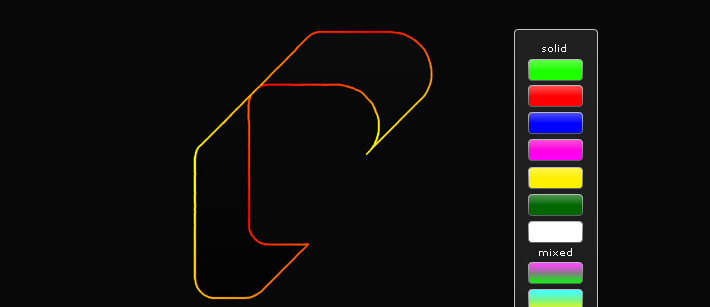
a question popped up on the papervision3D mailing list the other day about using the lines3D class to trace a 3D object. i found the idea fascinating, so i whipped up this little demo to demonstrate how simple it actually was. i started out by creating a simple cylinder with a wide base and small top, and setting its visibility to false. then creating my lines3D object. finally in the render loop i create a new line3D that connects each vertice. by checking to see in a counter variable is less than the total object vertice count ((box.geometry.vertices.length)), and adding a new line3D if the counter is less than that, or deleting all the lines and starting over...







